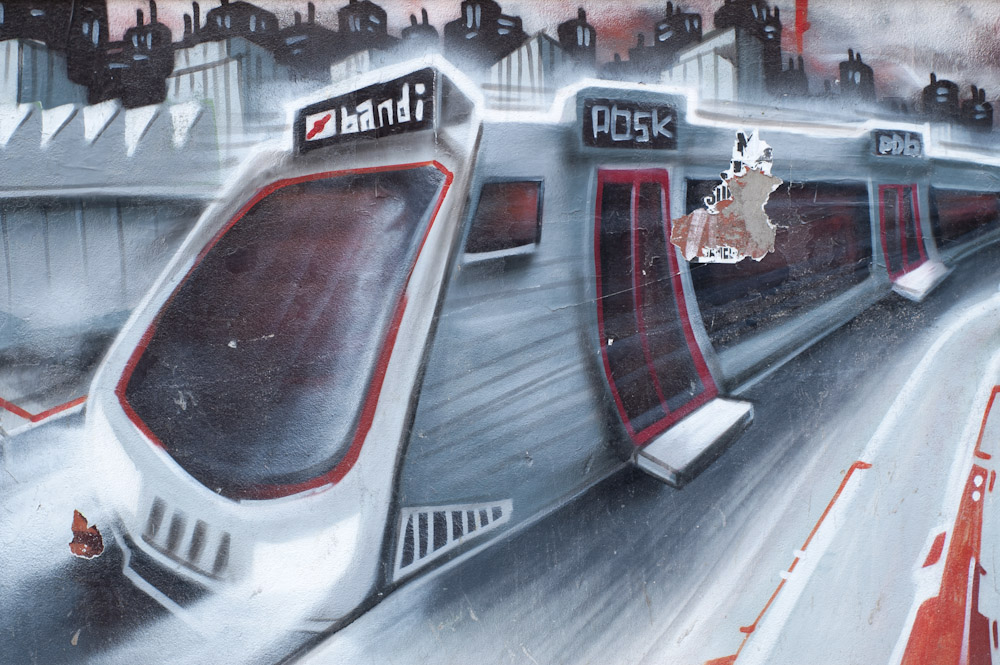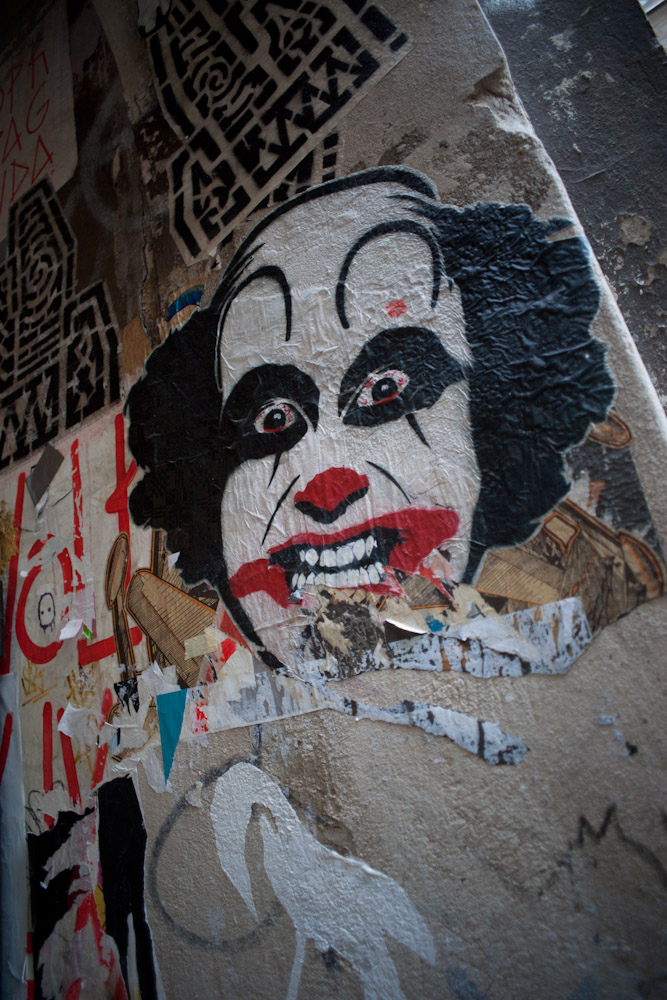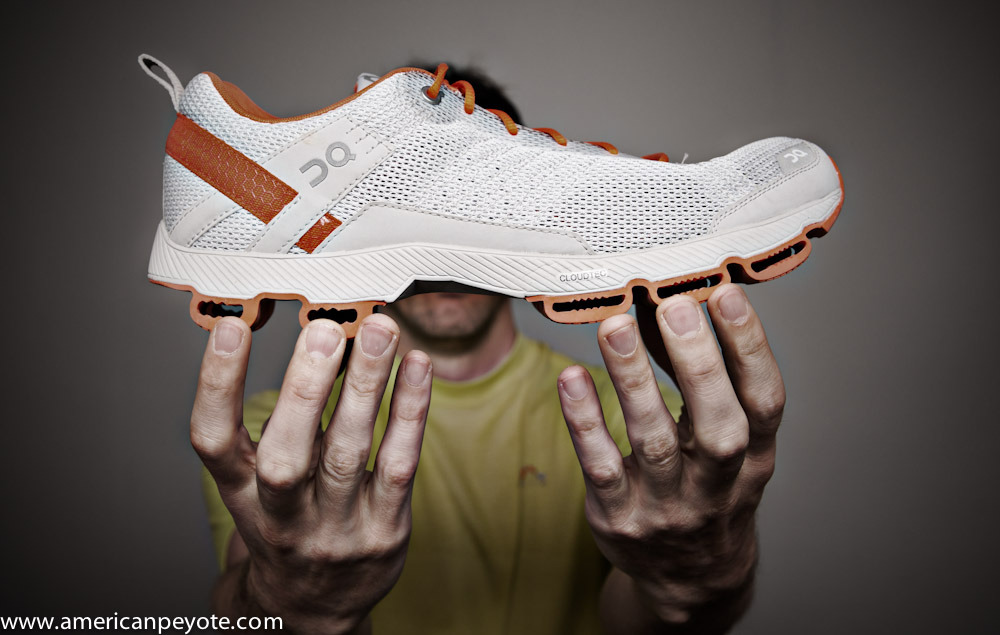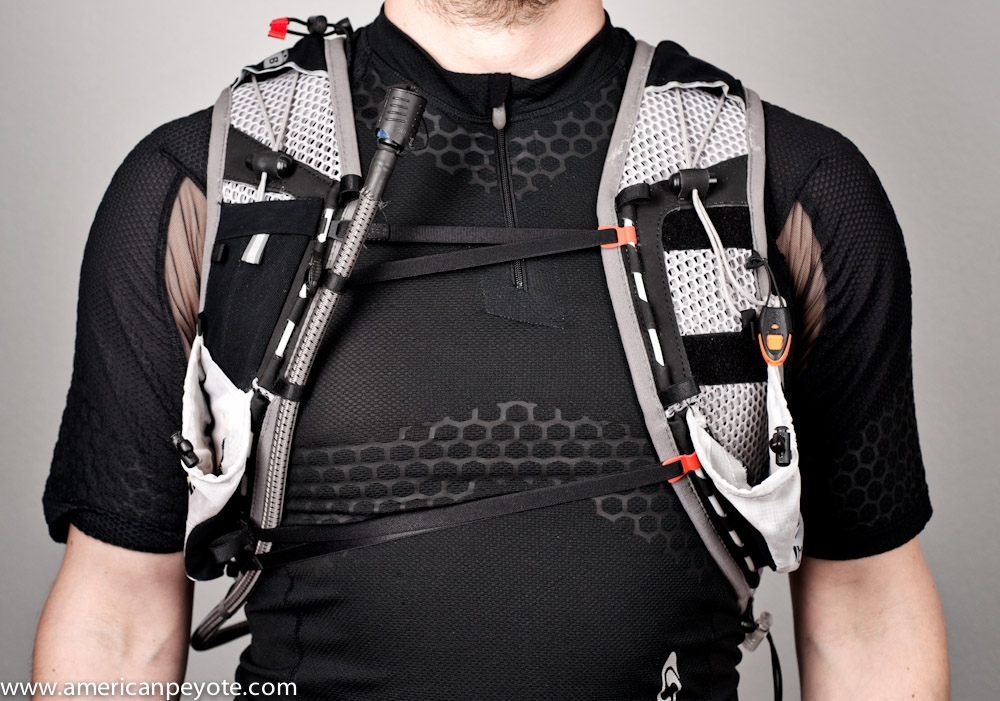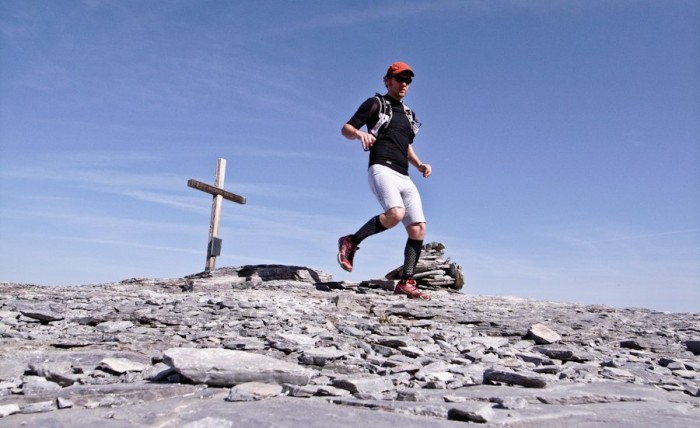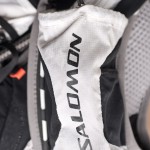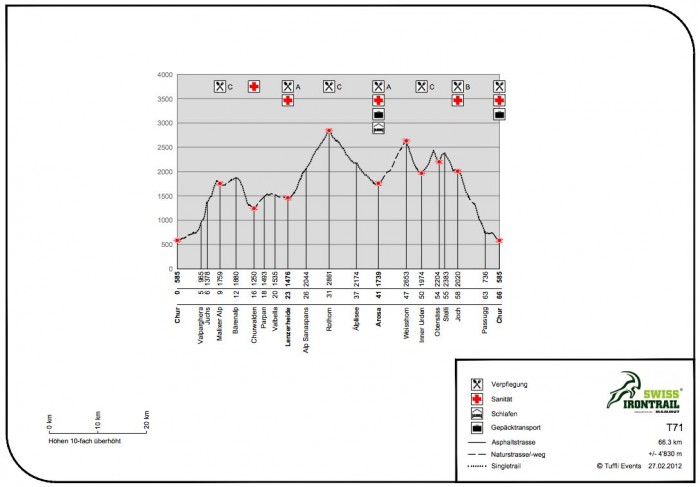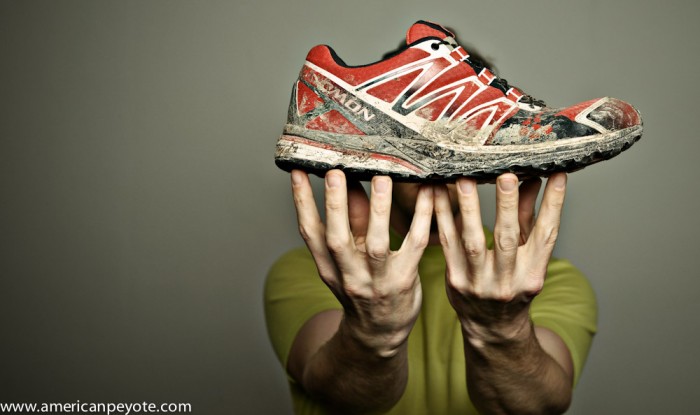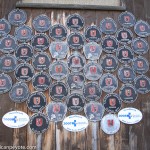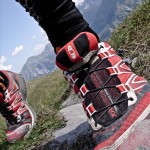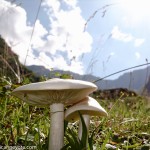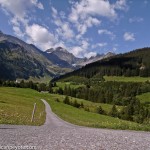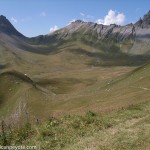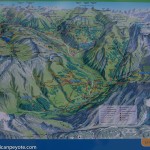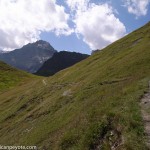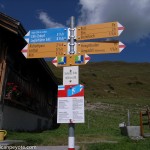I was heading to a Strobist lighting workshop at Cern in Geneva back in 2009, and spent the day before the even walking around Geneva. Before walking through a Tamil Tiger protest outside the UN I wandered the streets looking for street art. Geneva has a high hip hop graffiti influence. The Zurich graffiti style is more akin to what you might see in Berlin, a bit harder while Geneva has a friendlier feeling of warmer climates. I think most of this stuff like the funky metro train are probably gone by now, the area was locked off when I shot there. I should head back there sometime, it’s been some time and street art hunting once in a city is like only climbing up a mountain once. It’s cool and all, but it’s the process of going back, rethinking thoughts you thought and feeling how the world around you has or has not changed as you have or have not changed. Maybe that’s why I like gong back to Berlin every year or so and making new photos of old graffiti I already shot years before. I’m heading to the European Pirate Summit in Cologne next weekend, and I’m looking forward to seeing the street art there for the first time, and photographing it. (more…)
Mark
The City Whispers – Berlin Graffiti
There’s nothing here but a small deluge of Berlin graffiti and street art from my last trip there in 2011 for the Google developer conference. The conference was pretty so-so, nothing new to learn just marketing and you need to use the Chrome store to earn money from you app so thankfully I had taken the rest of my time during that trip to shoot street art around the city. There’s a lot of stuff from Kreuzberg and some of the more popular spots, along with some of the off-the-path places like the old Barenquell brewery. There’s also a few shots from the Tacheles art gallery, which is always on the verge of being closed down so someone can put in a new hip cafe devoid of culture. Some of the stuff here was hardly dry when shot, some of it has been there for years and hopefully will stay up till the next time I go back to clear my head.
I’ve never really been to a museum in Berlin, except for rare gems like the DesignPanoptikum – Museum für skurrile Objekte which just the coolest little museum in almost all of the world. Instead I’m content to just walk the streets all day with eyes tuned to look for little shadows on the walls and looking up to make sure I catch giant astronauts or clown faces. I’ll usually take a tour, like one from Alternative Berlin which is just about the coolest tour company in Berlin. Anyways, enjoy.
Web Monday Zurich 2012 #3
The following are my chaotic notes from the Web Monday Zurich 2012 #3 at the SRF, the Swiss Radio and TV company. The topic was online media, how things are converging, and what to expect for the future. The presenters were SRF, Joiz, and Paper.li. The following notes are recountings from my head, not necessarily exactly what happened or what was said, it’s a bit Gonzo, and if that disturbs you then the Back Button is at your disposal. (more…)
Swiss Irontrail Mammut Trail Running Test Event
 It pays to keep tabs on social media streams and to apply to things you find on the internet. I saw a posting from Mammut about a race called the Swiss Irontrail, the longest single stage foot race through the Alps, and via that I learned about the Mammut test event. The race comes in four flavors, T201, T141, T71, and T21. This being my first ultra, I decided to sign up to run the shorter of the ultra races, the T71. It’s about 68km long with about 4300m elevation gain (and then subsequent descent). Along with sponsoring the race, Mammut has also organized a test week with some pre-selected runners before, and after applying I was one of those lucky few invited down to Pontresina for their pre-Irontrail running event next week. This should a fabulous time running in the Alps, getting my lungs ready for the T71 and testing out the latest trail running gear from Mammut. (more…)
It pays to keep tabs on social media streams and to apply to things you find on the internet. I saw a posting from Mammut about a race called the Swiss Irontrail, the longest single stage foot race through the Alps, and via that I learned about the Mammut test event. The race comes in four flavors, T201, T141, T71, and T21. This being my first ultra, I decided to sign up to run the shorter of the ultra races, the T71. It’s about 68km long with about 4300m elevation gain (and then subsequent descent). Along with sponsoring the race, Mammut has also organized a test week with some pre-selected runners before, and after applying I was one of those lucky few invited down to Pontresina for their pre-Irontrail running event next week. This should a fabulous time running in the Alps, getting my lungs ready for the T71 and testing out the latest trail running gear from Mammut. (more…)
Web Monday Zurich 2012 #4
This Monday was Web Monday which means I had the chance to see the lounge of the Swisscom building for this 4th 2012 event of Zurich startups and ideas coming together. These are my notes from the event, taken largely in the Gonzo style and sent off to press with minimal editing. Inaccuracies, misspelled thoughts and rampant exaggerations are to be expected. Read at your own risk…
There were just two fantastic topics on hand at this fine Web Monday Zurich: the Blue Lion incubator and Online conversion / optimization for startups, our fantastic host was Swisscom, the main telecommunications company in Switzerland. (more…)
Inov-8 RocLite 285 User Review
In 2011 my do-it-all shoe was the Salomon Crossmax XR Neutral, and lately I’ve been running a lot on the On Cloudsurfer on non-technical trails (mainly flat, wide, and few tree roots or large rocks). However, I’m a gear whore and am always looking out for new concepts, lately I came upon the Inov-8 RocLite 285.
I was out running with Christian Langenegger the other day and he mentioned he as going to have a talk with the good folks from Inov-8. A week later I dropped by his place and he had two pairs of shoes to show me, the pair I took home to test was the RocLite 285 trail running shoe. I’ve since been running on them and pondering the design, and the following is the result of my meditations on them but I’ll just jump the gun and tell you straight up: the RocLite 285 is a wonderful minimalist trail running shoe. (more…)
On Cloudsurfer – First Impression User Review
 I’m getting ready for ultra mountain marathons like the Swiss Irontrail T71 and need a shoe to help me build up my distance running in the city environment (I hate running on asphalt). I’ve heard good things about the On CloudTec shoes from by a friend who has been running with On shoes on his marathons and ultras, so I picked up the Cloudsurfer shoe and have been running on it the past few days. (more…)
I’m getting ready for ultra mountain marathons like the Swiss Irontrail T71 and need a shoe to help me build up my distance running in the city environment (I hate running on asphalt). I’ve heard good things about the On CloudTec shoes from by a friend who has been running with On shoes on his marathons and ultras, so I picked up the Cloudsurfer shoe and have been running on it the past few days. (more…)
Salomon XT Advanced Skin S-Lab 5 – User Review
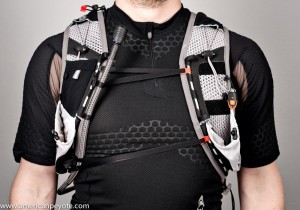 I am a gear whore, sort of a bag slut. I have packs and bags for everything from urban adventures to backcountry camping, biking, climbing, painting, photographing, writing, skiing, summit assaults, but nothing I had fit right for mountain running and ultra marathons. Nothing worked until I was able to get my hands on a Salomon XT Advanced Skin S-Lab 5 running pack last year when I signed up to run the SwissAlpine K42 mountain marathon. The S-Lab 5 is now my pack for mountain and trail running in Switzerland. After a nice season of running with it in 2011, here are my thoughts on the S-Lab, let’s call it a user review…
I am a gear whore, sort of a bag slut. I have packs and bags for everything from urban adventures to backcountry camping, biking, climbing, painting, photographing, writing, skiing, summit assaults, but nothing I had fit right for mountain running and ultra marathons. Nothing worked until I was able to get my hands on a Salomon XT Advanced Skin S-Lab 5 running pack last year when I signed up to run the SwissAlpine K42 mountain marathon. The S-Lab 5 is now my pack for mountain and trail running in Switzerland. After a nice season of running with it in 2011, here are my thoughts on the S-Lab, let’s call it a user review…
Salomon S-Lab Line
Before we jump in, some background is in order. Salomon is an interesting company. I know them mainly from ski gear, but now they have branched out into serious trail and long distance (ultra) running. From my perspective they’re the only large sports company which is really trying to capitalize on the trail running and ultra-marathon market, in some ways actually pushing the sport forward (and are essentially expanding the market need for their products). Unlike other companies which are now bringing out trail running products in a me too fashion, I have the feeling that Salomon is more committed to creating great products for this growing sport, and they also have the design and distribution capacity to bring innovative products to the market. This lends more confidence in Salomon as a company and I consider their products to be the benchmark by which others are measured by.
 The pinnacle of their effort is the S-Lab line (I guess this stands for Salomon Laboratory). Basically S-Lab means high-end clothing, shoes, and accessories for trail running. There’s an actual S-Lab place (a sort of prototype shop) where they design, build, test, and refine these products (check out this video on YouTube). They have a guy on their running team named Kilian Jornet who is a sort of a trail running God from Spxain. He wins a lot of ultra races (and came in 3rd after Dakota Jones and Andy Symonds at the 2012 Transvulcania) and is setting the pace for the sport. Salomon sponsors and learns from the best runners in the world, but it seems like the relationship with Kilian is very close. So close, that as I understand it, that various products in the S-Lab product line are developed with direct feedback from Kilian like the new Salomon Sense running shoe (and the S-Lab 5 pack). The result is a product line with a high level of design and attention to detail that addresses the needs of people pushing their personal limits on the trail.
The pinnacle of their effort is the S-Lab line (I guess this stands for Salomon Laboratory). Basically S-Lab means high-end clothing, shoes, and accessories for trail running. There’s an actual S-Lab place (a sort of prototype shop) where they design, build, test, and refine these products (check out this video on YouTube). They have a guy on their running team named Kilian Jornet who is a sort of a trail running God from Spxain. He wins a lot of ultra races (and came in 3rd after Dakota Jones and Andy Symonds at the 2012 Transvulcania) and is setting the pace for the sport. Salomon sponsors and learns from the best runners in the world, but it seems like the relationship with Kilian is very close. So close, that as I understand it, that various products in the S-Lab product line are developed with direct feedback from Kilian like the new Salomon Sense running shoe (and the S-Lab 5 pack). The result is a product line with a high level of design and attention to detail that addresses the needs of people pushing their personal limits on the trail.
The S-Lab products are lean, light, fit close to your body and really move with you. Normally clothing is something that you need to wear for protection, but in an ideal world you would go without, it’s just there because we want to protect our bodies from the elements. But the S-Lab products actually improve your performance in subtle ways (my scientist opinion). Function and design are combined in a beautiful way, and the 5 pack is a wonderful example of designing a product to specifically fulfill the needs of long-distance athletes.
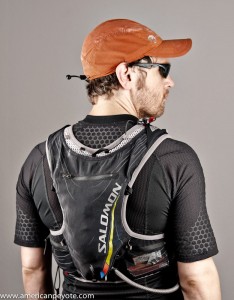 S-Lab 5 Overview
S-Lab 5 Overview
The S-Lab 5 is made very well with materials that stretch and conform to your body as you move (they call it Sensifit construction). The pack fits very close to your body and the fits like a glove analogy makes sense here. I have a fabulous pair of Mammut gloves that often wear with the pack when the weather is cold, and the two products give me the same sense of perfect form and function. Designed as a hydration pack with space for minimal gear, it’s not the type of pack you can stuff full of gear you might need. It’s a minimalist pack where you need to make sure you only take what you really need. There are two water bottle pockets on the shoulder straps (which also work well for small cameras, food, etc) and a water bladder in the main pocket on the back. The bulk of the pack is composed of a hexagonal mesh material. It’s an elastic 3D weave of hexagons (or you could call it honeycomb) that defines the core function of the pack, to feel like a second skin so that you almost forget that you’re wearing it. The open mesh also lets perspiration move through the material and dry quickly.
If you’re a material scientist (like me) you’ll instantly think of a hexagonal crystallographic lattice when you pick up the pack. The hexagon is a beautiful structure with three main directions and corresponding planes of symmetry that make it ideal for this application. From a mechanics viewpoint, this means the the fabric should stretch with an equal resistance in three directions. Other packs usually have 2D weave like normal nylon (think of the fabric weave of your clothing) which is basically orthotropic. This means it will provide equal stretch in two, the 0 and 90 degree directions, but at 45 degrees you get a different mechanical response. Anyways, I digress, the point is that a hexagonal arrangement isn’t an accident here and if I had designed this from scratch I would have taken a similar design path (the hexagonal crystal structure was inspiration for one of my patents on heat shield technologies).
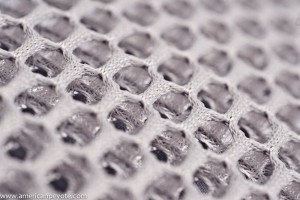 The only real thing you need to know is that the design of the pack reduces pressure points over your body. It hugs and maintains contact with the surface of your back and frontal torso, more like a tactical vest than a traditional pack. Due to the multi-directional symmetric planes of the hexagon array the pack material expands as you move in different directions, differentiating from all other pack designs (as I know them).
The only real thing you need to know is that the design of the pack reduces pressure points over your body. It hugs and maintains contact with the surface of your back and frontal torso, more like a tactical vest than a traditional pack. Due to the multi-directional symmetric planes of the hexagon array the pack material expands as you move in different directions, differentiating from all other pack designs (as I know them).
Breath Easier
A huge problem with non-running packs when used for trail running is compression across the chest. In general, to keep a backpack on your body you need to stabilize the pack by closing down the shoulder and chest straps. As you start to run and the weight of the pack becomes more unstable and you can only counteract this by going slower or tightening the straps to their limit. However, this then constricts the ability of your torso to move, which constricts the volume of air you can take into your body. Basically your breathing ability is impeded and your running performance is reduced by your reduced ability to take in oxygen. Usually the only solution is to not wear a pack, or to reduce the load so that there isn’t as much mass to stabilize.
Traditional packs are designed so that load is carried by the shoulders and via contact with the lower back, generally using materials that are essentially static (don’t stretch). The S-Lab 5 is made of dynamic material that stretches easily in three different directions (thanks to the hexagon array) and maintains contact over your torso. This design greatly reduces and almost eliminates the stabilization problem (from my perspective). Since the pack is more like a vest, it maintains a large surface area in the back and over the shoulders. This essentially reduces the need for a chest closure system, because the pack is almost one with the form of your body. The S-Lab pack uses just two thin elastic bands that cross over your chest to close the pack around your torso. Since the pressure isn’t localized on the chest strap system and shoulders, the expansion of your chest isn’t restricted as much as with other packs. The pack remains stabilized around your body and therefore you can breath more naturally as the pack fabric expands and moves with you, so your breathing rhythm and oxygen flow isn’t restricted. The system makes for a much more natural running experience.
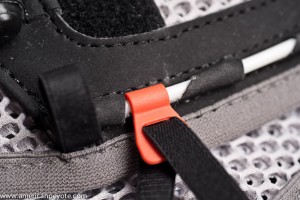 Detailed Construction
Detailed Construction
The manufacturing of the S-Lab is really top notch and includes a lot of attention to detail. Seams are sewn correctly, the materials are durable, and the design is streamlined. The main rear pocket has a stretch front, so you can cram in arm warmers, a jacket, water bottle, whatever, and it keeps the mass compressed as close as possible to your spine. I find this is important for running and balance because it means that the moment of inertia of the pack is minimized, and over the length of an ultra marathon this can greatly reduce fatigue as compared with a pack where the mass is positioned out too far from your center gravity (or is off-center from the vertical axis of your spine). Inside the main pocket you have a small magnet to close the opening. There is an adjustment system to pull the pack higher up on your back if needed (to customize the fit). The elastic cords are all high quality as are the plastic clasps which secure the chest compression straps. The front pockets have draw string closures making them super easy to access. I use them for gloves, snacks, cameras, or water bottles. The pack comes with a Source hydration water bladder, and includes a sleeve with reflective backing, which would help keep liquids cool from the heat of your back as you’re running. The drinking tube comes under your arm and then up the shoulder strap, so it isn’t flying around over your shoulder like on other packs. You can secure running sticks to the pack as well, although I haven’t tried this yet. There are small side pockets that are nice for a cell phone, extra snacks (like magnesium sticks) or keys.
Trial By Trails
I got into trail running because it combines the elements of speed from ski touring with the technical footwork of climbing and the thrill of mountaineering. I’ve taken my S-Lab 5 on the SwissAlpine K42, the Jungfrau Marathon, and on various mountain runs around Switzerland including Rigi Kulm, Lauterbrunnen – Eiger Rotstock, Braunwald, Elm – Linthal, biking from Winterthur to Bauma, and then running up and down the Hornli. In general I’m not one to count kilometers, but I’ve run with the S-Lab over long distances and terrain variations including asphalt, basic off-road and mountain trails, ascending and descending at high and low velocities, and S-Lab pack have been marvelous. It could also be the most comfortable pack I have for multi-pitch sport climbing, but for storage reasons I take my Lowe Alpine Attack pack. If I carry a normal mountaineering load I will often get a strained shoulder muscle (think it’s connected to cracking my clavicle long ago). I found this happens also if I run with a small pack like the Lowe Alpine Attack, but with the S-Lab I never have this problem. This tells me directly that the pack fits very well and distributes weight better than anything else I own (and biomechanics engineer side of my brain agrees).
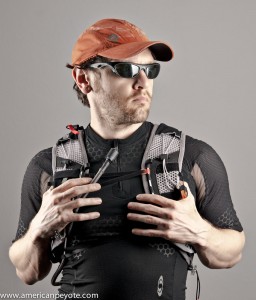 Yes, It’s Worth It
Yes, It’s Worth It
If you’re looking for a casual running pack don’t even bother considering the S-Lab. It retails for 180 USD and you probably won’t use it enough to appreciate it (the true benefit comes when you’re logging lots of km). This is a piece of gear for serious distance and ultra runners, where you want a pack that will minimize your energy expenditure over long distances and will feel like a second skin around your body. The pack comes in two sizes, and this is probably the greatest limitation. If it doesn’t fit you well there isn’t much room to adjust it. I’ve tried mountain running with my Lowe Alpine Attack pack, my minimal Mountain Smith bike pack and other small packs, nothing compares to the S-Lab 5. It is vastly more comfortable and puts less stress on my shoulders than any other pack I have ever tried, and that makes the price totally worth it. I have loved running over the Swiss Alps with the S-Lab 5, and I’m now desperately trying to find the new larger version, the S-Lab 12 to take on the Swiss Irontrail T71 in July 2012.
2011 Jungfrau Marathon Report
There’s a loud contingent of German and Dutch runners crowded into the lounge of the Villa, watching recaps from the 2010 Jungfrau Marathon on a flat screen TV and pounding coffee and beer…getting fired up. I am content to sit outside on the patio, contemplating death and the implications of an undereducated American workforce. Balls – I’m just out here enjoying the last glow of the sun defining the mountain landscape around Interlaken. I’ll try to code some Python on my netbook before going to bed, and tomorrow I run the 2011 Jungfrau Marathon.
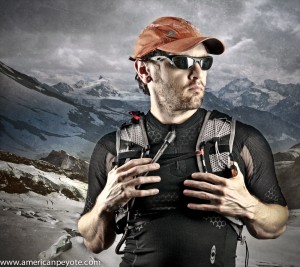 So It Began
So It Began
At the start of the race I decided to snap an image of the start inline with my Ricoh GRD, and it said there was no memory left. As it happened, although I was smart enough to charge the battery, I forgot to put in a memory card. I can still see it plugged into the reader on my computer, waiting there patiently to be retrieved and made ready to record more memories. Maybe I could just use images from my Lauterbrunnen – Eiger Rotstock run? Essentially it was the same views, but my run had more altitude and a little climbing at the end. There were just a few key memories to photograph anyways, such as the guy running as a caveman with a plastic blow-up mauler-club hanging off his back. Or there was the twin tower runner, a guy put a building over this head, with the words 9/11 We will remember written on the back. A fitting tribute, after all, the Jungfrau marathon was on Sept. 10, 2011, just one day before the 10 year anniversary of the attacks on the World Trade Centers of Sept. 11, 2001. Most everyone else just ran in normal running uniforms, stretch pants, tight shirts, the normal garb. I was decked out in Salomon S-Lab running gear (basically the same as my portrait here). A few had custom shirts listing their finished marathons, or finisher shirts from races like the SwissAlpine or Boston or…where ever. I have to say I’ll probably never wear my Jungfrau or SwissAlpine finishing shirts anywhere – not even for a photo shoot. Maybe I’ll put one on my kid if I ever become responsible for one (which feels like a long-shot at this point to be honest, but people keep telling me I’m still young).
The conditions for the race were sunny and clear skies the entire day. It was amazing how clear and blue the sky above the Eiger group was, and this meant an alpine sun beating down on my body. I’m a Pole and Ukrainian mix by history. I don’t really get drunk easily and I can toil in a field all day, but if the sun is beating down on my back it can suck up my energy and endurance quickly and without remorse. That’s one reason why the SwissAlpine K42 wasn’t such a bad trip for me. The sun was barely out and half the race had some form of rain. Cool temperatures, and my body regulates that temperature environment very well – it’s my zone.
The marathon started in Interlaken, just in front of the Hooter’s restaurant. In Switzerland they try to be conservative and instead of two giant eye attracting O’s to mimic the pneumatic attributes of the staff, they have a small, respectable sign that makes you think they serve up owl as a faux-delicacy in hamburger form. The start of a marathon is always filled with hope and apprehension for me. Will I, could I, should I finish? The start is announced and the static topography of heads in front of me start bobbing up and down in alternating rhythms, and as the wave moves forward and cheers erupt from the spectators, you have a tangible feeling that what you are doing is noble, and relevant to the world. Then you stop because the people in front of you stop because the people in front of them ran into the people in front of them, and the process starts again.
The name Jungfrau conjures up notions of high altitude snow capped peaks rising above the Swiss landscape. It gives you the impression of running up through the trees and rock trails to the base of the Eiger. However, my notion of adventure, my dance with the romance of another mountain marathon was wounded, knocked down and kicked in the stomach while rubber hoses whipped me near unconscious – because the majority of the race took place on asphalt and dirt roads.
Asphalt Torture Ordeal
The first 23 km from Interlaken to Lauterbrunnen were basically all on asphalt (with some welcome variation). Asphalt – that black hellishly flat torment under my feet. Why do people enjoy running on this hard shit? Completely illogical. The sun shoots back at you from the street and it’s just one foot after the other on the same flat black mother-fucking god-damned spine breaking solution engineered for automobiles. In retrospect, I could have just stayed in Zurich and run through the alleyways in the Niederdorf. In the future I’ll be checking the marathon routes more carefully, and avoid those with excessive lengths of the pointless hard black torment. My body tried to be optimistic and accommodate this madness at first, but after I hit the 20 km mark in Lauterbrunnen my back sort of ceased up and I had to stop to stretch. I was reduced to a near-broken robot, fatigued in the joints by too long a life on the assembly line of some vast post-apocalypse IKEA production facility based on the dark side of the Moon. I just decided to walk until the madness would end and the highway would become trails and would finally begin ascending in altitude instead of looping around the valley for no good reason. Lush green fields all around with mythic rock walls climbing to the sky and I was walking along a long black strip of pain. Very enjoyable.
The asphalt hell was bound to end, and as soon as we began ascending into the woods I began passing people who thought they had left me on the black flats. Finally the black torment was gone and I could jog up the hiking path headed towards Wengen, and then it would be just a bend in the road with the Jungfrau peak in view and then onwards to the mountain trails leading to the finish line. I kept on pushing, my legs starting to burn and the sweat was starting to pour. I was beginning to think I should just walk the rest of the way. But in my despair appeared a savior – and inspiration lifted my soul.
The Wall
The most majestic moment of the day occurred when I was below Wengen, my legs tired and my heart was protesting in my chest, I thought I would fall in line with the other runners and just walk slowly up the route. Then the mountain air was permeated by soul lifting familiar line, softly and far away at first, it cut through my physical despair as I went higher and lifted my feet upon ancient Greek sandals, beckoning me towards the Gods…“We don’t need no education…teachers leave them kids alone.” Some fantastically awesome person was blasting Pink Floyd the Wall through the forest – energy coursed through my body and I floated up the inclined path, filled with a beautiful spirit, leaving colleague after colleague behind to contemplate the form of my legs ascending the mountain. Philosophically, The Wall is probably one of the most magnificent songs a person can hear on a marathon when the trail turns steep and you think you can’t keep going. The Wall is a mental block inside your head telling you to stop and take a break. Breaking on through The Wall is the mental challenge long-distance running is supposed to represent (although now marathons are more of jogs next to the 100km races). There is nothing more glorious than feeling that energy burst through your body and feeling the weight evaporate as you fly onwards. So, to whoever it was blasting The Wall through the trees below Wengen, you’re awesome, thank you.
This amazing feeling died after I couldn’t hear the music anymore and the route switched back to the asphalt of the Disappointment of Wengen. This is really something I can’t get my head around, you have an awesome, beautiful area to run in, and the organizers decide to include as much fucking asphalt as possible. Why? I know this area, I’ve been up the way a number of times and I know that there are hundreds of kilometers of nice Swiss Alpine Club trails to run on, but we were back on asphalt, the scourge of my soul, the tormentor of my body.
Thanks to the God-forsaken asphalt my hip was sort of killing me beyond Wengen, and I had to walk, there was no realistic choice and I saw no point in hurting my body for an asphalt run. I made my way up past the dorf and onto the dirt road heading eventually up to the scree ridge and the Eiger glacier – nearly to the beginning of the end now. Then I saw that there was a time check point. There was a giant clock and guys starting to draw a line across the trail. They called out my name and encouraged me to press on. It seems (and I would need to independently confirm this) that I was one of the last people to make the cut-off for finishing the Jungfrau ordeal.
A Joyful Exit
Now that my body was brutalized and I could barely run, the fun part of the race began – negotiating a few kilometers of alpine trail, leading up to the high point of the race and an easy descent to the finish line. This last section climbed up through rocks and trees on a mountain hiking trail. I was moving slow, but my slow was still faster than everyone around me. This is the stuff I love to run on. The trails are intricate puzzles of foot placement and climbing. You fall into a comfortable flow of concentration jumping from rock to earth and finding ways to pass the people around you. The scree is the last section, it’s the remnants of the glacier climbing up and up to the pinnacle. This is where people take breaks, vomit, and occasionally need medical attention from the race support staff. I alternated between hiking and jogging my way up, the biggest problem being that I couldn’t easily run around the other folks on the narrow trail in front of me. My heart was pumping like mad and I just wanted to finish as quickly as possible. We ran under farmers waving Swiss flags, we ran past the Alpine horns blowing mythic notes into the mountain winds.
Passing by the last water station I carefully folded my cup and placed it in a garbage bag by the trail. This caught the attention of one of the marathon helpers, who couldn’t believe I would take the time to not only dispose of my trash, but even take the time to fold it up first to reduce the garbage volume. The marathon helpers are lucky if the runners try to drop their cups by the trail instead of tossing them over their backs in an overly dramatic gesture of exhaustion. Yes people, you do have the energy left to put the cup in the garbage bag instead of blindly throwing it into the wind.
One of the coolest things about the Jungfrau Marathon is way everyone addresses you by name (it’s written above your number), from the race organizers offering encouragement to the moms who are happy when you take the time to give their kid a high-five, to the random spectator who yells out, “Hey Mark, the beer is at the end on the right.” And then I saw it, the finish line was just a few seconds away and I pulled out some energy out of my deep near-gone reserves to run over the line in style. I was greeted by a smiling friend of the marathon, who placed a medal around my neck, and I was done.
Beyond the Jungfrau
The Jungfrau Marathon was, fuck…that was a hard run. Excessive asphalt is an unholy way to organize such an event, but probably I just need to stick to mountain marathons. Maybe I’ll start a new Greek myth about a man condemned to an afterlife of running the same asphalt road each day to attone for his sins. I’m not a flat surface runner, it just doesn’t offer my soul anything. I finished in 6 hours, 35 minutes, a full half hour more than I needed for the SwissAlpine K42 – but I don’t like to piss around about numbers and statistics, this isn’t football after all. The Jungfrau is probably an excellent (and enjoyable) marathon challenge if you normally run on roads and enjoy the normality of hard blackness under your feet. The views of Jungfrau and Eiger are amazing, but I’ve been on other fantastic runs this year, and nothing beats the SwissAlpine, where you run in the mountains as opposed to below them. The short mountain trail at the end kills most of the runners – it was where my heart filled with joy and I found the motivation to not just press on to finish but to take my body as far as it could go.
Now it’s the start of the 2012 running season, snows are starting to melt from the passes and I’m thinking, I’m thinking….Adelboden to Kandersteg over the Wildstrubel. And then…maybe the Leadville 100? No, first we start with the Swiss Irontrail T71.
Swiss Trail Running 2012: Irontrail T71
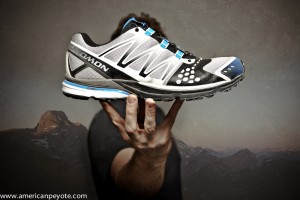 The thing I love about trail-mountain running is that it combines the best elements of speed and terrain. As a runner I move over mountain trails with speed inspired by ski touring. I use the foot work and balance I’ve developed as a sport climber. I stay light and go from valley to peak to valley in one day and feel a sense of exploration that traditional mountaineering doesn’t provide.
The thing I love about trail-mountain running is that it combines the best elements of speed and terrain. As a runner I move over mountain trails with speed inspired by ski touring. I use the foot work and balance I’ve developed as a sport climber. I stay light and go from valley to peak to valley in one day and feel a sense of exploration that traditional mountaineering doesn’t provide.
In 2011 I started with trail running with the Swiss Alpine K42, a nice little mountain marathon in the Davos region. I continued with the Jungfrau faux marathon and learned how much I hate running on asphalt, and now it’s 2012 and the passes are starting to clear of snow. In a race I look for elevation change and mountain terrain. I look for alpine exposure and the elements. The Junfrau marathon was a big disappointment in this respect, and that’s why this year I have my eyes set on the Irontrail T71.
2012 is the inaugural year of the Swiss Irontrail, with distances ranging from 21 to 200 km it has the longest single stage race in existence. As this will be my first ultra marathon I’m going to start easy and do the T71. The T71 is sort of short by ultra standards, 66.3 km distance but includes + 4’830 m / – 4’830 m. The basic path is Chur – Malixer Alp – Churwalden – Lenzerheide – Rothorn – Arosa – Weisshorn – Joch – Chur. It’s one of those races where you need to take a minimum amount of material with you to reduce the possibility of a runner dying during the event. I have my eyes on a Salomon XA Advanced Skin S-Lab 12 backpack, but have yet to find a way to buy one in Switzerland.
Naturally I’ll needs some shoes for this race as well. My beloved Salomon Crossmax XR shoes from 2011 are at the end, I’ve broken out a new pair (this time in blue) but I’m also looking at the La Sportiva Vertical K shoes. Anyways, here’s a good bye photo of my red Crossmax shoes, still a little muddy from running up and down and then back up again the Hornli in Zurich.
My Swiss Alpine – Elm – Linthal Run
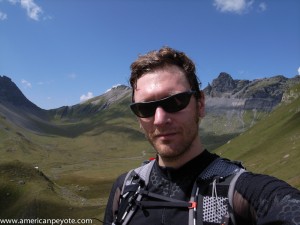 Since running the 2011 SwissAlpine K42 marathon (and deciding the morning after to do the Jungfrau marathon) I’ve begun amassing mountain runs around Switzerland. These little adventures, or fast hiking exercises, I’m not sure what the current marketing concept is from Salomon, I guess I just like going from point A to B as fast as possible (hence the running) in the Swiss alpine environment. Afterall, you don’t need the organization of an actual marathon event to enjoy some trail running. In this edition, I present the run from Elm to Linthal over the Richetlipass.
Since running the 2011 SwissAlpine K42 marathon (and deciding the morning after to do the Jungfrau marathon) I’ve begun amassing mountain runs around Switzerland. These little adventures, or fast hiking exercises, I’m not sure what the current marketing concept is from Salomon, I guess I just like going from point A to B as fast as possible (hence the running) in the Swiss alpine environment. Afterall, you don’t need the organization of an actual marathon event to enjoy some trail running. In this edition, I present the run from Elm to Linthal over the Richetlipass.
I didn’t really intend on doing this trip, originally I wanted to go from Steinibach. to Linthal, but I took the wrong bus and ended up in Elm Dorf at 977m. I considered just running over the Segnaspass to Flims-Laax, but the trail was closed and the route to Linthal over the Richetlipass at 2261m was now the only option for getting out of the valley. According to the signs it’s an eight hour hike as you ascend up a beautiful valley and then negotiate some alpine terrain before descending down and finding the train station on the opposite side. The local drum band might be practicing along the path, and you’ll pass by a few award winning milk producers, who proudly display their achievements on their barns. This initial ascent continues for a few kilometers, and gradually beings rising as the mountain peaks come into view.
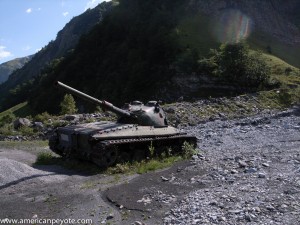 Swiss Tank Base
Swiss Tank Base
Soon the mountain panorama beings to reveal itself, and if you do the run on the right day of the week, you’ll now quite clearly discern the sound of artillery fire reverberating off the mountain walls. That’s not some sort of acoustic trickery, at the end of the valley there’s a Swiss Army tank base, officially named Schiessplatz Wichlen. Yes, a bonafide panzer firing range in fact, where locals and army fanatics can drop by to watch the Swiss tanks train their shooting skills. Being a fun-loving explosion boy I also wanted to check out the experience, but I also wanted to not miss the last train from Linthal. I did however, stop to take photos with my Ricoh GRD of the old panzer rusting in front of the base. From here you just follow the signs down the road a bit, then hang a left and begin the ascent to the Ski hutte. As a side note, if you’re running here don’t pick up any random tank shells you might find along the trail.
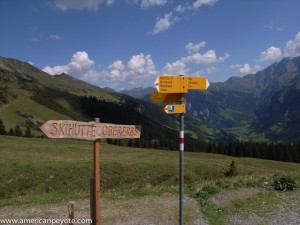 I stopped at the ski hut for a drink and enjoyed a Sinola, a type of Coca-Cola imitation. I got rid of the carbonation of course, stayed for a few minutes and then pressed on. Beyond the hut you’re on mountain trails heading up to the pass. The alpine sun was high and strong this day – and my body is tuned for cold-weather endurance. It’s just a few hundred meter assent, really just a short Swiss mountain jog up to the pass and then down the other side (sort of).
I stopped at the ski hut for a drink and enjoyed a Sinola, a type of Coca-Cola imitation. I got rid of the carbonation of course, stayed for a few minutes and then pressed on. Beyond the hut you’re on mountain trails heading up to the pass. The alpine sun was high and strong this day – and my body is tuned for cold-weather endurance. It’s just a few hundred meter assent, really just a short Swiss mountain jog up to the pass and then down the other side (sort of).
Mountain Panorama
I began ascending up and up along the trail. The higher ridges that seemed a world a way a few hours ago were now just above me and I was headed to the top of their backbone. Beyond the first ridge you have to descend down, and enjoy a fantastic alpine amphitheater, peaks filling 180 degrees of your vision. I stopped to shoot a panorama and then continued on. There’s another hut along the way, and on a fine sunny Saturday expect to say Gruezi to men with large white beards enjoying large steins of beer in the hot alpine sun. There’s a giant boulder, about halfway between the amphitheater ridges, and I stopped for a climbing break. The Salomon Crossman shoes sort of suck for rock climbing, but the boulder is easy enough to play around on without killing yourself. I like mountain running for the environment, and if you can’t stop to enjoy it there’s no point in running through it (for me at least).
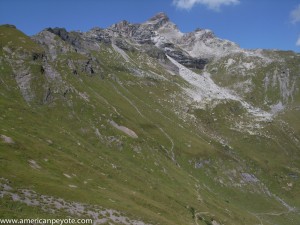 Beyond the boulder pause you have a short ascent up to the final pass. From here you can continue up the blue alpine route (no trail just a rock ridge) up to the summit, or head down to Linthal. Naturally, I wanted to do the summit, but I also wanted to be on a train by 4pm, and the summit would wait for a day when I wasn’t already low on water. The descent down to Linthal is quite steep and muddy. It basically goes straight down and if you’re not accustomed to these trails expect to go slow or trip and fall on your face. Hiking sticks are highly advisable for the descent here, it’s just grass and rock, but it’s a steep beast when the sun is high, also expect to find shrooms along the way and indulge in fantasies of fairy kingdoms getting squashed under your feet.
Beyond the boulder pause you have a short ascent up to the final pass. From here you can continue up the blue alpine route (no trail just a rock ridge) up to the summit, or head down to Linthal. Naturally, I wanted to do the summit, but I also wanted to be on a train by 4pm, and the summit would wait for a day when I wasn’t already low on water. The descent down to Linthal is quite steep and muddy. It basically goes straight down and if you’re not accustomed to these trails expect to go slow or trip and fall on your face. Hiking sticks are highly advisable for the descent here, it’s just grass and rock, but it’s a steep beast when the sun is high, also expect to find shrooms along the way and indulge in fantasies of fairy kingdoms getting squashed under your feet.
Finished
The final run to Linthal is a gradual downhill descent, passing through woods and next to streams fed by the melting glaciers and mountain snow. If you get tired and ask the right person you’ll get a ride on a farm tractor, but don’t plan for it. I arrived at the Linthal train station at 4:30pm, making the adventure a comfortable 6.5 hours of mountain running (and walking) with tank picture breaks, a little bouldering and a cola in between. This was the hottest run I’d ever been on and drank half a liter of mineral water at a cafe while waiting for the next train.
Looking for more info on mountain running in Switzerland? My collection of running articles is growing.
Founder Institute Switzerland – Application Deadline
 I was at a bootcamp event for the Founder Institute the other week. The event was held in the Swisscom Brain Gym, a cool part of the office in Bern where they’ve created a sort of creativity friendly place with living rooms like you might find in a Swisscom customer residence. There’s also a fine collection of phones on display, including a giant brick mobile phone. I thought Google Zurich has cool offices with their sofa made of tennis balls (and it is cool), but the Brain Gym is really a step above the Google model that people always drool over. Google feels like another planet, the Brain Gym is feels like a comfortable living room, but almost from another planet. A designer tennis ball sofa is cool, know what’s cooler? A whole wall made of tennis balls.
I was at a bootcamp event for the Founder Institute the other week. The event was held in the Swisscom Brain Gym, a cool part of the office in Bern where they’ve created a sort of creativity friendly place with living rooms like you might find in a Swisscom customer residence. There’s also a fine collection of phones on display, including a giant brick mobile phone. I thought Google Zurich has cool offices with their sofa made of tennis balls (and it is cool), but the Brain Gym is really a step above the Google model that people always drool over. Google feels like another planet, the Brain Gym is feels like a comfortable living room, but almost from another planet. A designer tennis ball sofa is cool, know what’s cooler? A whole wall made of tennis balls.
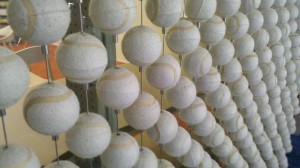 FI
FI
So what is it? The Founder Institute is a startup incubator organization coming out of Silicon Valley with the purpose of spreading entrepreunerialship to people like me, young professionals who like the flexibility of starting up a company but need some direction. Essentially you develop your company from the early idea stage with FI and are mentored by fantastic start folks to help you along your way and scale your great concept.
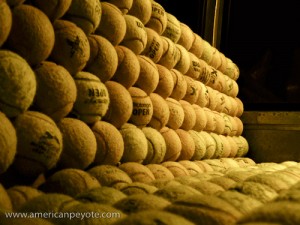 The Offer
The Offer
The institute offers mentorship from partners and helps you form your team and shows you how to execute. In return you provide a 3.5% warrant on your company that you found, and everyone from the institute (including yourself) benefits from the growth and prosperity of the other companies that are founded. In this way it’s not about competing with your classmates, it’s about everyone having a vested interested in each company succeeding. I love this concept, and it makes a bit more sense to me at the moment than just going to school for an MBA. I like to learn by doing and I have enough degrees at the moment.
So here’s the deal, the Institute needs a certain number of applications to start the thing in May. If you’re interested in joining or just interested in this being possible, then please apply. The goal is close to being met, but if it’s not done by this Sunday it won’t go forward. The best part of the application is writing about why you want to join. I ended up quoting both Malcolm X and Hunter S. Thompson in my application, and now that I think about, I’m applying because I want to impact and hack the future instead of just passing through the present. Will you join me on this journey?
